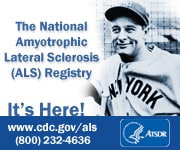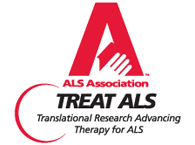 What if they discovered a disease and nobody wanted it?
What if they discovered a disease and nobody wanted it?Four years ago this month I discovered an erie blogspot that went by the name Brainhell. As I searched the net for ALS information I was curious yet skeptical of this writer who chose a black background with a dark image of the human brian.
He was 41, and diagnosed with the fatal and incurable disorder called ALS (amyotrophic lateral sclerosis, Lou Gehrig's disease). His blog was the story of that journey, from diagnosis, to searching for a cure, to acceptance. A husband and father of two that wrote every day about his life and interacted with the group who were his online family. Mostly I was a lurker that was entrenched with this daily dairy and the way he discribed life from his place. Who was this stranger in my computer?
Reading along with this young man's journey always made me feel very humble, for he dealt with this terrible disease with grace and his strong spirit never wavered. He had not been able to speak for quite a while and communicated via computer or message board. Some of his recent writings displayed his weakness by way of character errors while using only one finger. His last post on his blog was a message of love to his wife and his two young children.
Hemingway had it right. "If the world is not the enemy, neither is it our friend. In the end, no matter who surrounds us, we travel alone. Our friends and loved ones are there, providing an infrastructure of love and support. But courage must be drawn from within. Let the world see us as we see ourselves and have the faith to permit us to do it our way."
His final words; Like Cap. James Tiberius Kirk, he said, "It was fun."
Brainhell guarded his privacy and the privacy of his family zealously. This journey we had shared with him had come to an end. But he left as a parting gift for his readers a photo of himself and some last words. I've left those for your discovery.







.jpg)









